Hokusai’s Kingdom of Ghosts
Inspired by frightening legends, the artist represented ‘yokai’, sly spirits in Japanese folklore, in a series of engravings.
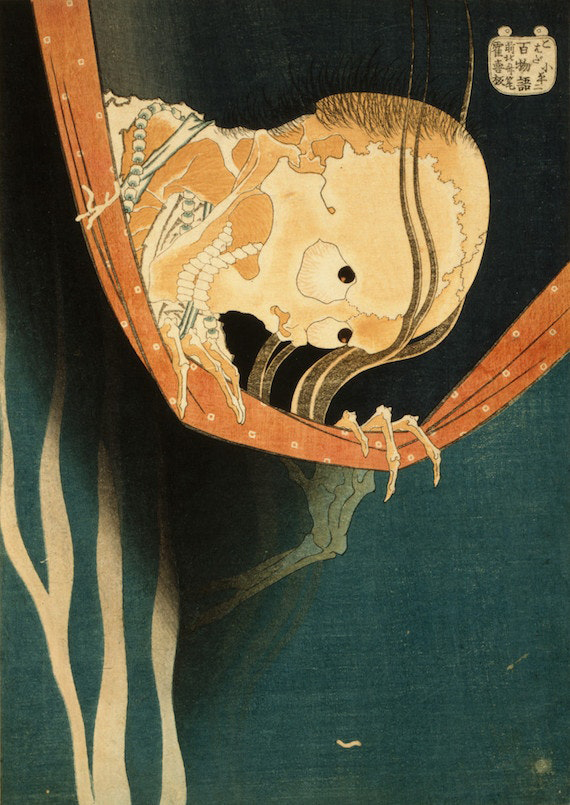
© Public Domain
In his series of woodblock prints Hyaku Monogatari, One Hundred Ghost Stories, begun in 1830, Katsushika Hokusai summons vengeful and cannabalistic monsters and ghosts instead of his traditional Japanese landscapes. This series of engravings takes inspiration from a Japanese tradition, Hyakumonogatari Kaidankai, a moment shared between friends, surrounded by dozens of candles, where each one shares a scary story with the rest of the group before blowing out one of the candles. Legend has it that once the final candle is blown out, a spirit appears.
Revenge of the spirits
These illustrations feature characters well known to fans of yokai, sly spirits that come to haunt the living. Central characters in Japanese tales and legends, they take multiple forms: menacing animals, monsters, or objects that come to life when night falls.
Katsushika Hokusai depicts Oiwa, for example, who appears in one of Japan’s most famous ghost stories. This woman, killed by her husband, who wanted to marry a younger, more attractive woman, is reincarnated on her former husband’s wedding night as a paper lantern that comes to haunt the young couple. Another example is the real-life historical figure of Kohada Koheiji, shown by the master printmaker as being raised from the dead to torment his wife and her new lover.
Known for his iconic series Thirty-Six Views of Mount Fuji, Katsushika Hokusai also created numerous shunga works, part of an erotic art movement that was prolific during the Edo period (1600-1868). Yokai, meanwhile, continue to stimulate artistic creation in Japan, and animation studio Studio Ghibli featured them in the film Pompoko.
One Hundred Ghost Stories, Hyaku Monogatari (1831-32), is a series of prints by Katsushika Hokusai.
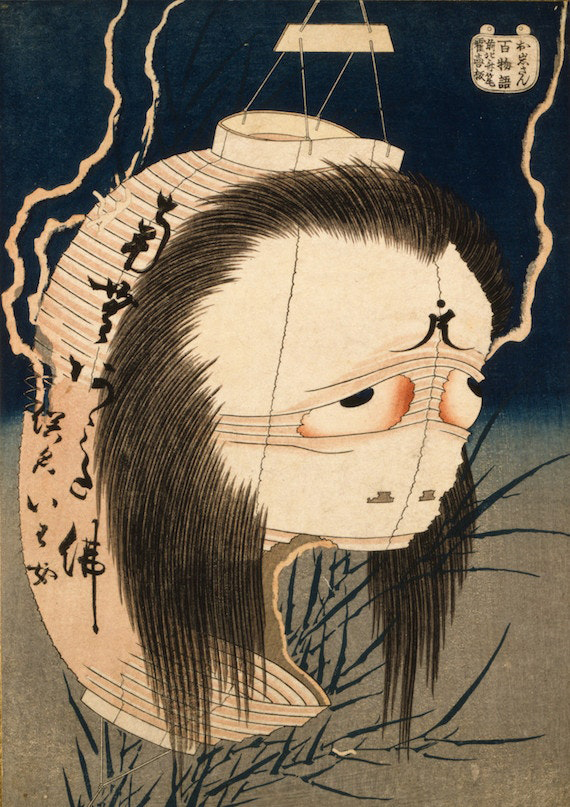
© Public Domain
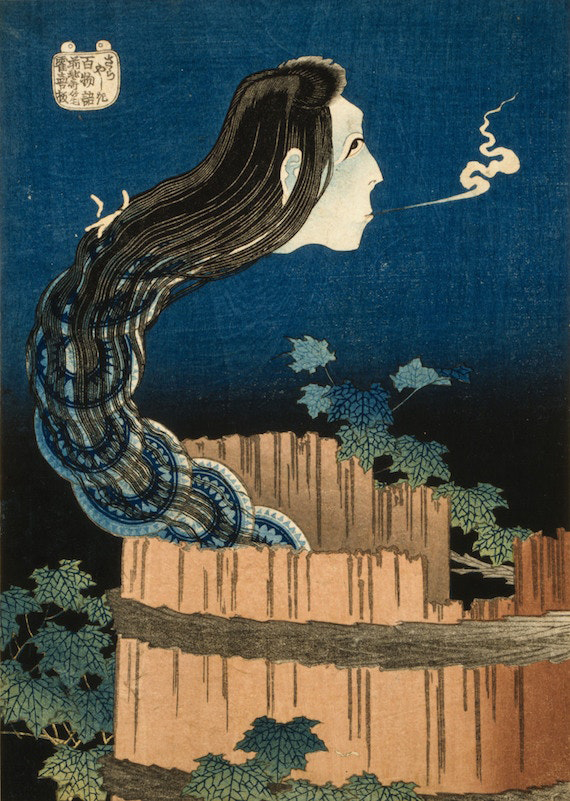
© Public Domain
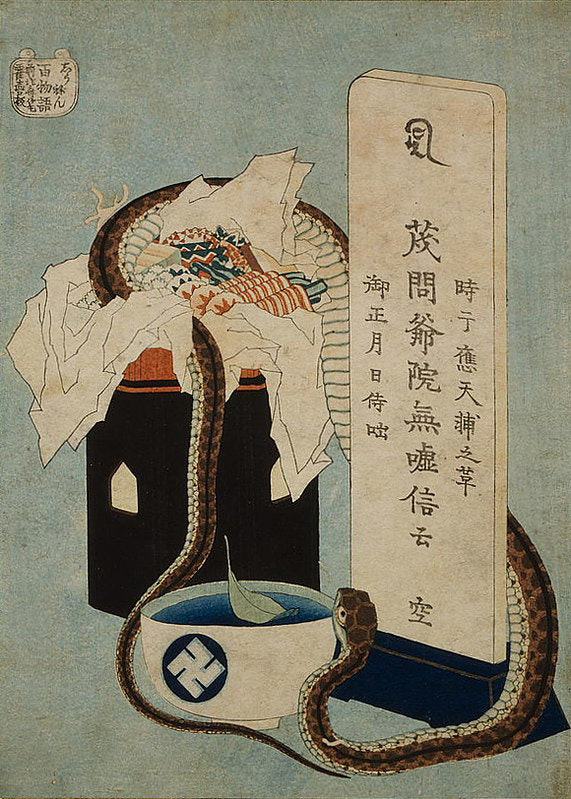
© Public Domain
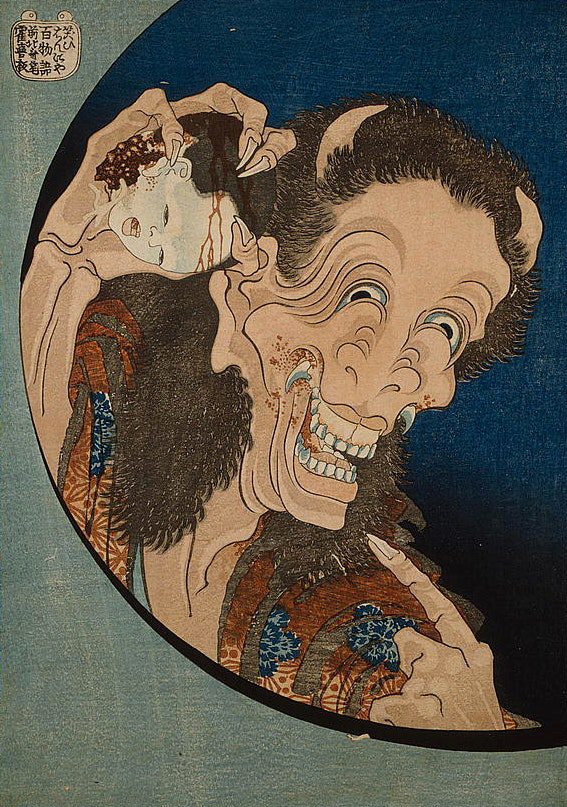
© Public Domain
TRENDING
-
The Tattoos that Marked the Criminals of the Edo Period
Traditional tattoos were strong signifiers; murderers had head tattoos, while theft might result in an arm tattoo.

-
Paris, Tokyo: Robert Compagnon
With his co-chef and talented wife, Jessica Yang, Robert Compagnon opened one of the top new restaurants in Paris: Le Rigmarole.
 3:31
3:31 -
Chiharu Shiota, Red Threads of the Soul
Last year, more than 660,000 people visited the retrospective 'Chiharu Shiota: The Soul Trembles' exhibit at the Mori Art Museum.

-
‘Before Doubting Others, Doubt Yourself. Who Can Truly Say a Dish Isn’t What It Used to Be?’
In ‘A Non-Conformist’s Guide to Surviving Society’, author Satoshi Ogawa shares his strategies for navigating everyday life.

-
The Story of Sada Yacco, the Geisha who Bewitched Europe
Described by Dazed magazine as the first beauty influencer, she has been restored to her former glory since 2019.





